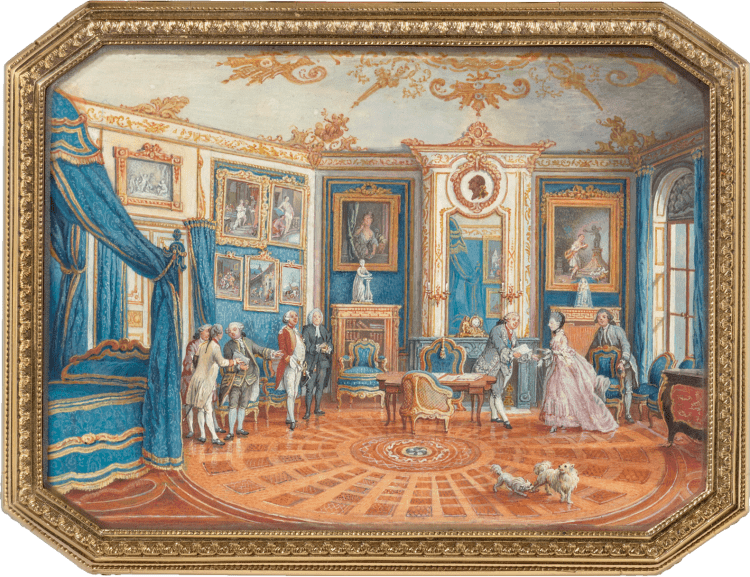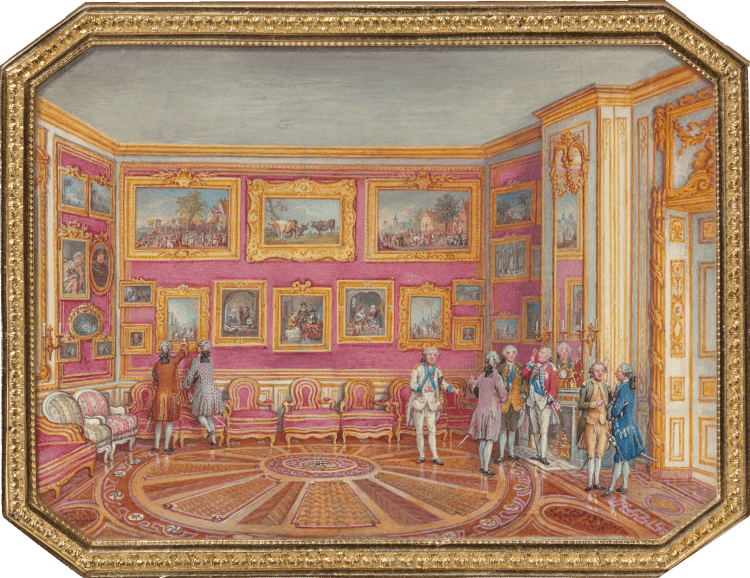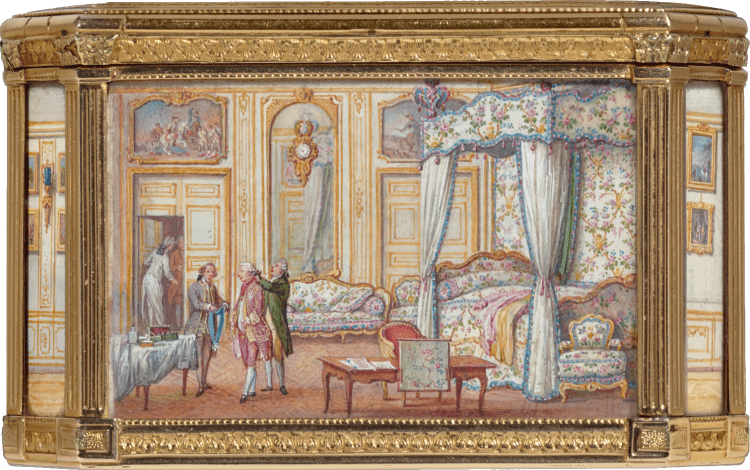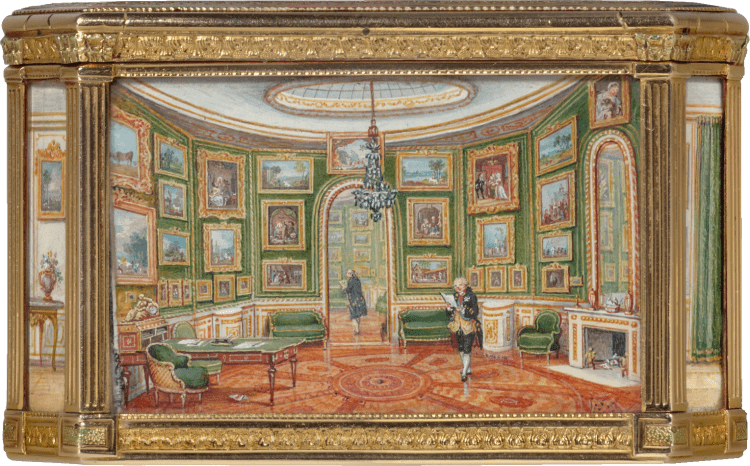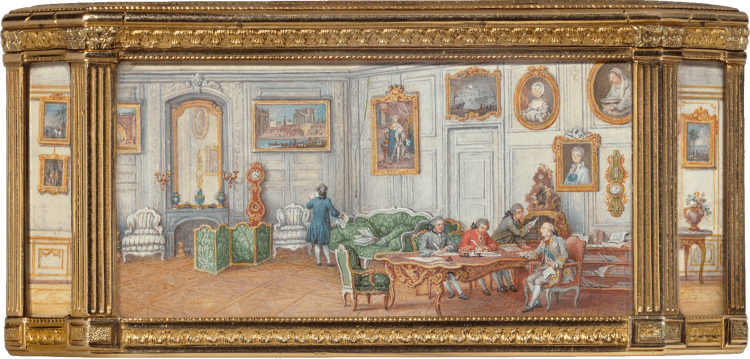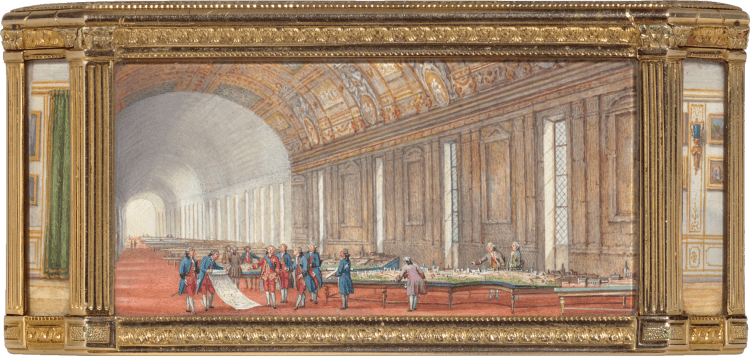
The Blue Bedchamber
The view of the blue bedchamber at the minister’s Parisian mansion was given pride of place on the lid of the snuffbox. It features a magnificent marquetry floor, a ceiling decorated with gilded stucco, white and gold panelled walls lined for the winter with blue damask silk, and a Polish bed (a bed with a small canopy) adorned with gold braid. A cabinet and a desk are placed symmetrically on either side of the fireplace, above which is an overmantle mirror topped by a bust of Louis XV.
This is one of the liveliest scenes. On the right, the Duc de Choiseul is greeting a lady who is perhaps his sister, the Duchesse de Gramont, while a uniformed servant holds out a chair for her. On the left is a group of people, some in military costume; one figure has been identified as Abbé Jean-Jacques Barthélemy, keeper of the Cabinet des Médailles (collection of coins and medals) at the royal library. Two dogs are playing in the foreground. The display of contemporary paintings by the French School, alongside some masterpieces by Dutch and Flemish painters, reflects an aspect of the Duc de Choiseul’s art collection that he began to focus on in the 1760s.
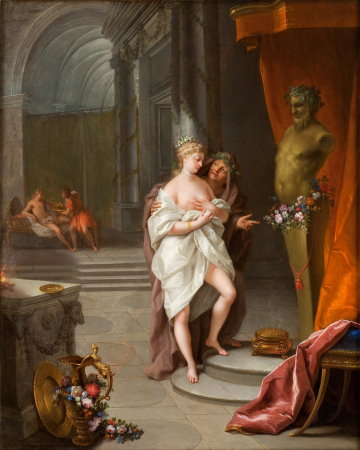 X
X
 X
X
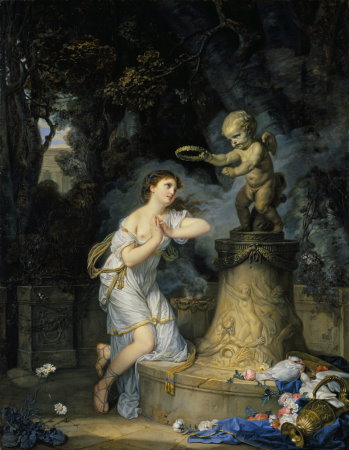 X
X
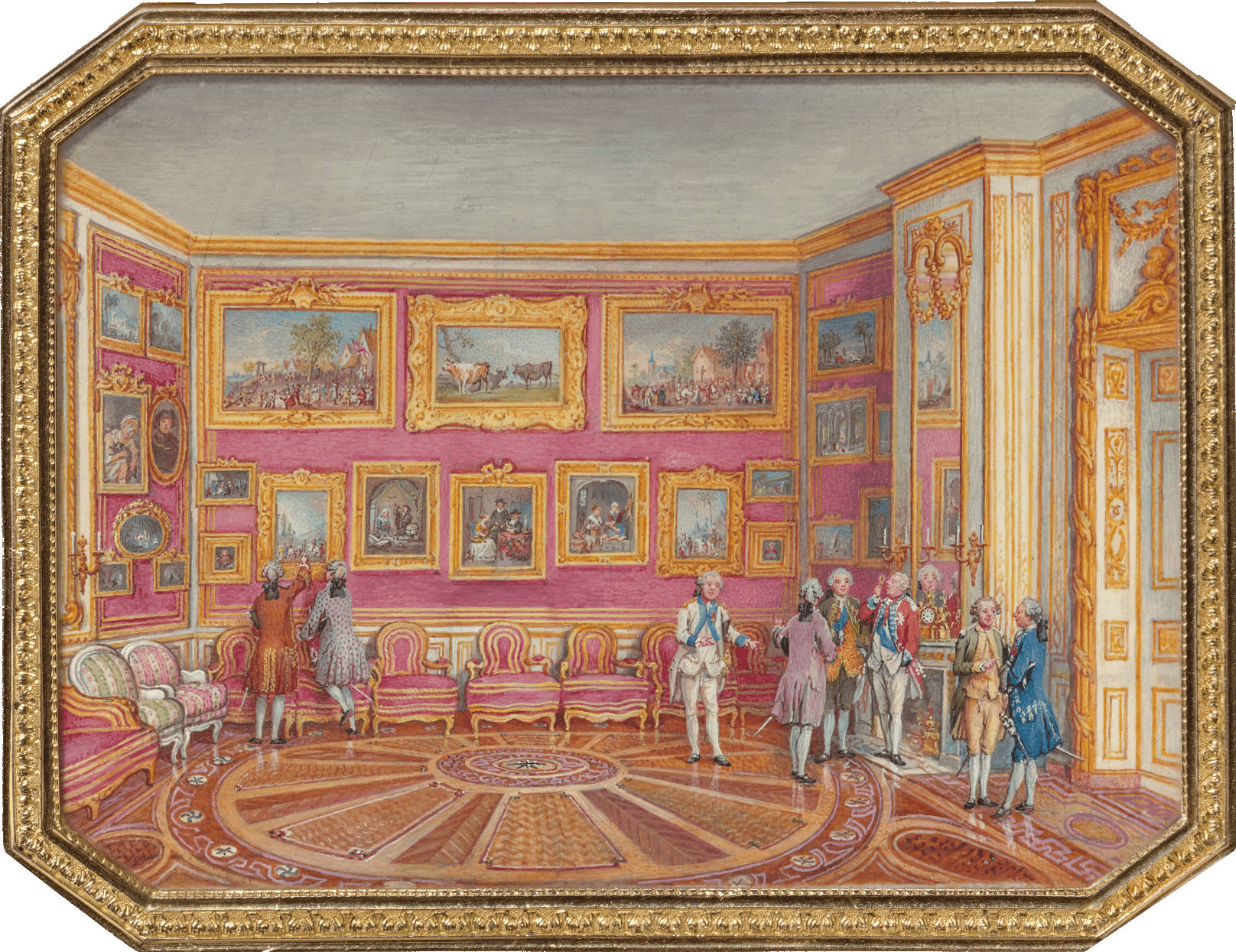
The Painting Gallery
This room was entirely dedicated to displaying the minister’s collection of paintings. Many of the 24 paintings shown here – most of which are recognisable – are Dutch and Flemish works from the 17th century, the kind of paintings Choiseul evidently preferred from his early days as a collector. In 1772, before he sold his collection, Choiseul asked the Parisian printmaker Pierre François Basan to publish an album with reproductions of about a hundred of his finest pieces, which is why many of them can be identified in the miniatures on the snuffbox.
This scene shows a group of men visiting the gallery. Their positions reflect their interest in the paintings: some are leaning on the armrests of a chair to get a closer view. A small group has gathered around the Duc de Choiseul, who is holding a magnifying glass and talking – perhaps about the quality of detail in the paintings! Choiseul is wearing his uniform of Colonel General of the Cent-Suisses and Grisons, and most of the men around him are in military costume.
 X
X
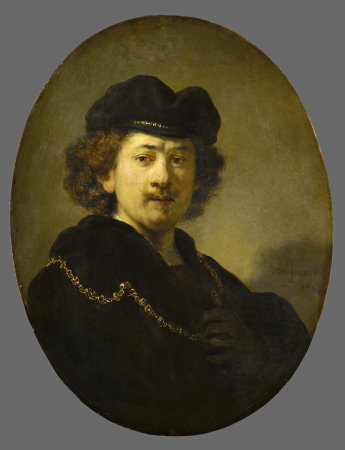 X
X
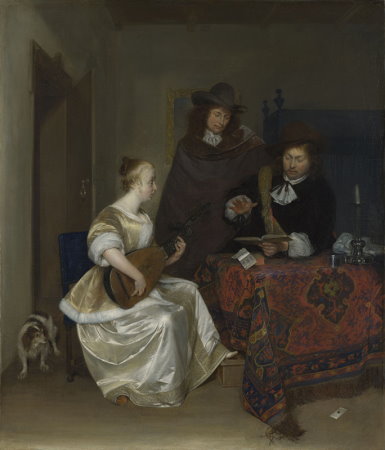 X
X
 X
X

The White Bedchamber
This bedchamber is decorated in white and gold. The magnificent four-poster bed and set of seats are upholstered in a fabric with a floral design on a white background. The two sets of double doors have overdoor panels painted in the style of the battle painter Charles Parrocel; they feature a concealed door that probably led to a wardrobe closet. Choiseul, whose dressing gown has been placed on the bed, is almost fully dressed. He stands facing a washstand draped with a cloth and holding the appropriate accessories, while one manservant adjusts his wig and another prepares to hand him the blue ribbon of the Order of the Holy Spirit. In the foreground opposite the fireplace is a table fitted with a fire screen; the documents lying on the table suggest that the minister is always busy with work...
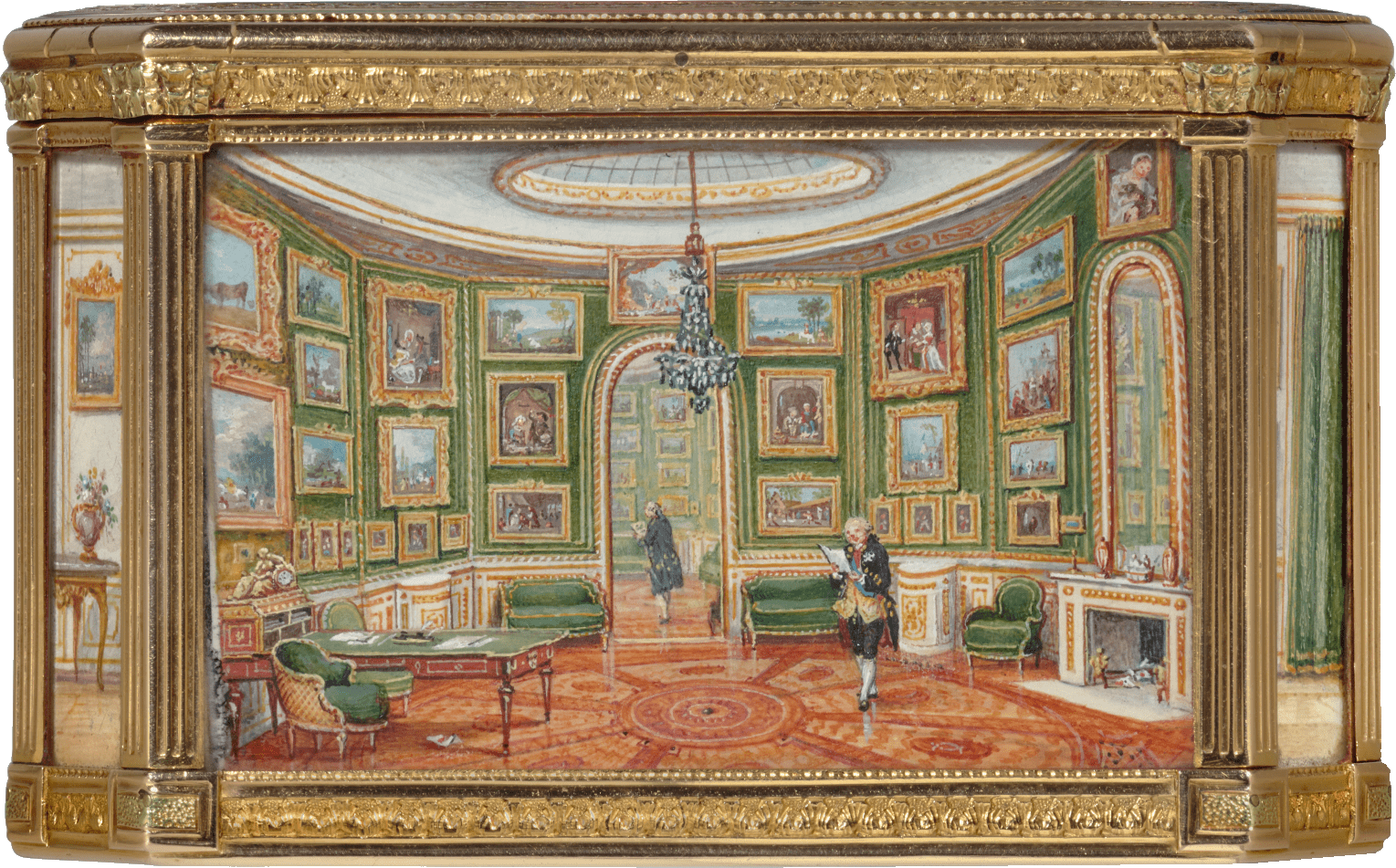
The Octagonal Study
In 1763, the Duc de Choiseul had his octagonal study richly decorated and furnished. A particularly modern feature was a roof lantern providing natural light from above. In 1882, the Duc d’Aumale acquired a writing desk very similar to the one in this miniature; attributed to the prominent craftsman Simon Oeben, it is now conserved, minus the cartonnier (an ornamental box for storing papers), at the Château de Chantilly.
The tall, arched mirrors heighten the impression of density created by the display of paintings, which includes some of the masterpieces in Choiseul’s collection – landscapes by great French, Dutch and Flemish painters and some remarkable Dutch genre scenes. The minister, the only figure in the room, is depicted pacing up and down, absorbed in reading some documents he has probably just written: a sheet of paper has fallen to the floor under the desk, and pieces of correspondence have been thrown into the fire (their wax seals are still visible).
 X
X
 X
X
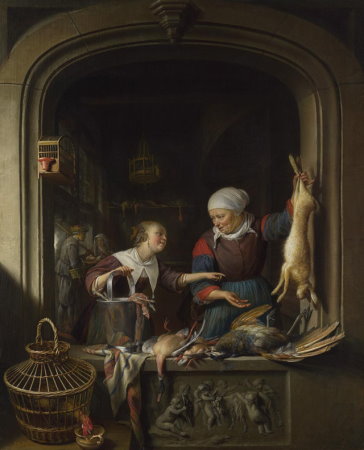 X
X
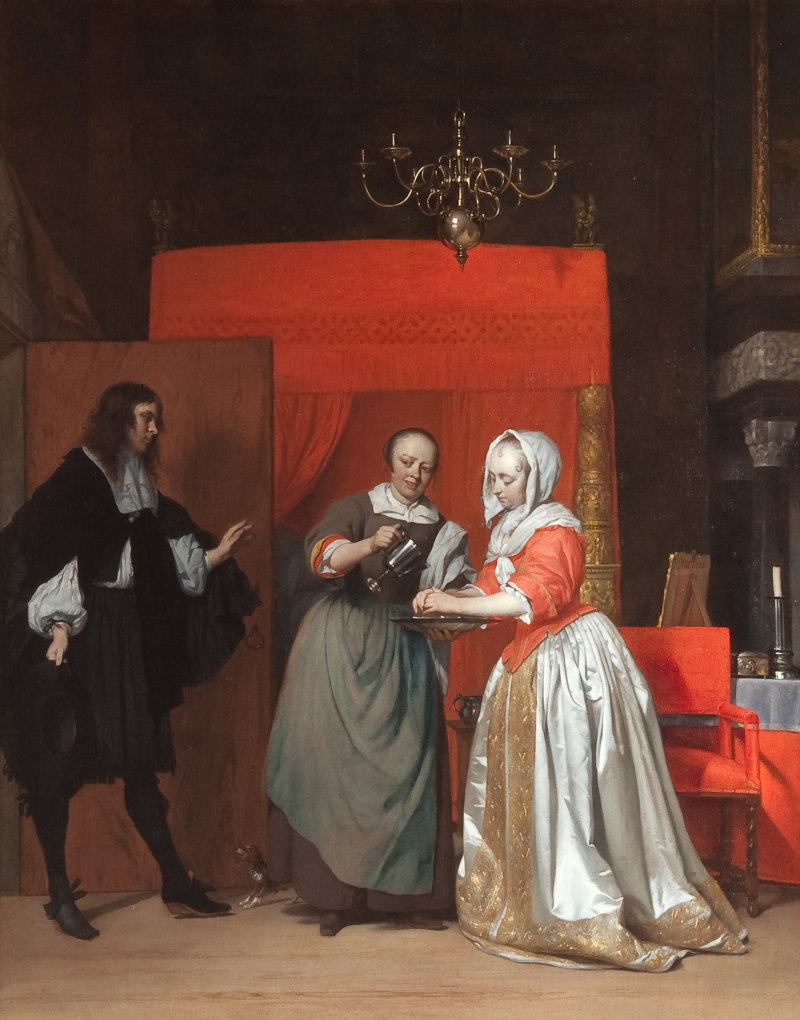 X
X
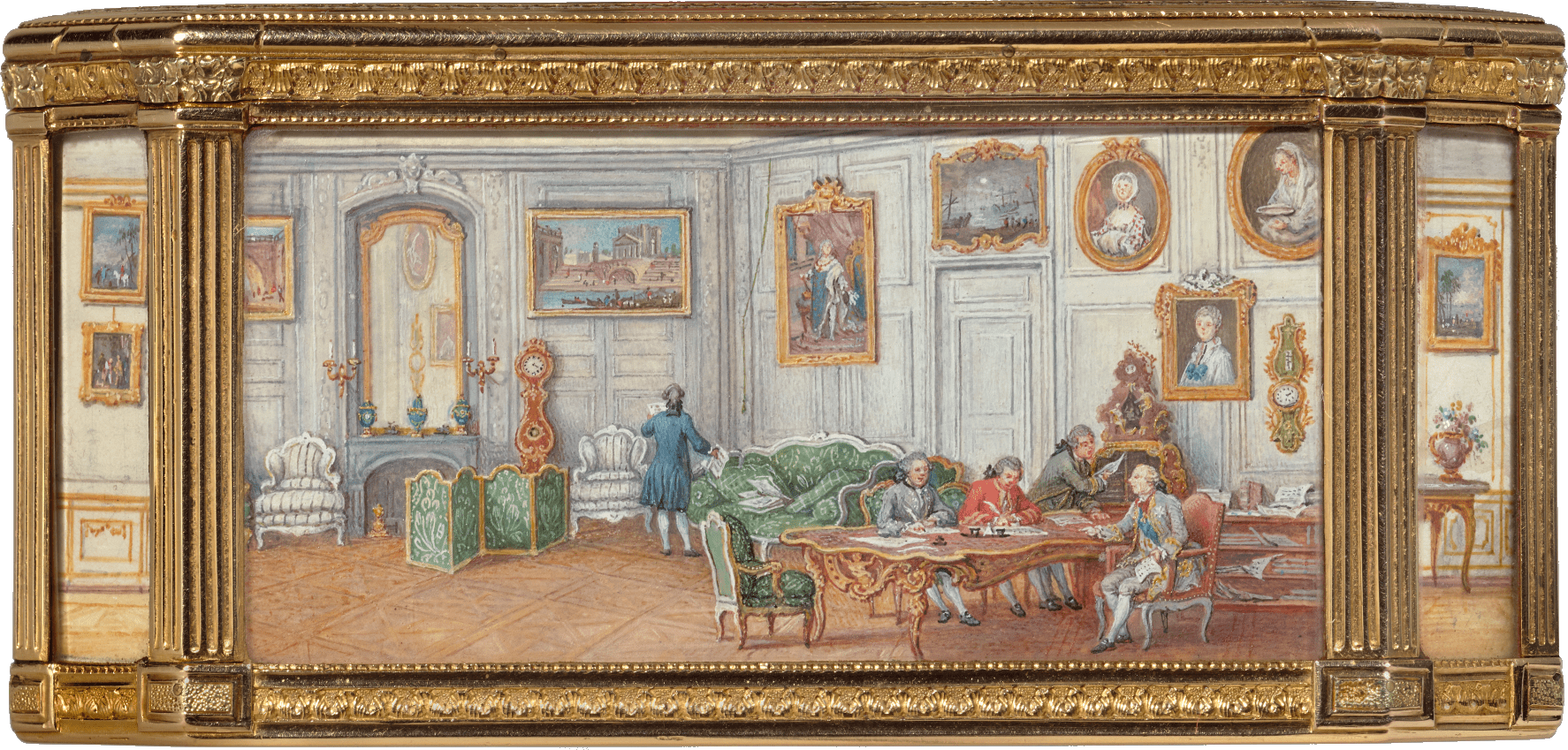
Choiseul’s Ministerial Apartments
The miniatures on the two longest sides of the snuffbox show Choiseul in his ministerial apartments at Versailles. On the wall is the ‘official’ portrait of Louis XV by Charles-André van Loo, together with portraits of Choiseul’s benefactor Madame de Pompadour, and of his beloved sister the Duchesse de Gramont. An imaginary view of Rome by the French painter Hubert Robert recalls Choiseul’s first diplomatic mission.
The minister is seated at his desk, opposite two secretaries to whom he is dictating. Two other figures are busy sorting documents: one is placing them on the sofa, the other is putting them in the cartonnier that accompanied Choiseul’s superb writing desk. The miniature provides an invaluable record of this desk, a masterpiece of rococo cabinetmaking attributed to Antoine-Robert Gaudreau and decorated with remarkable bronzes by Philippe Caffieri, acquired by Choiseul after the death of its former owner, the financier and collector Pierre Grimod du Fort. Having gained iconic status as a ministerial desk, it was subsequently acquired by the French diplomat Talleyrand, then by the Austrian chancellor Metternich.
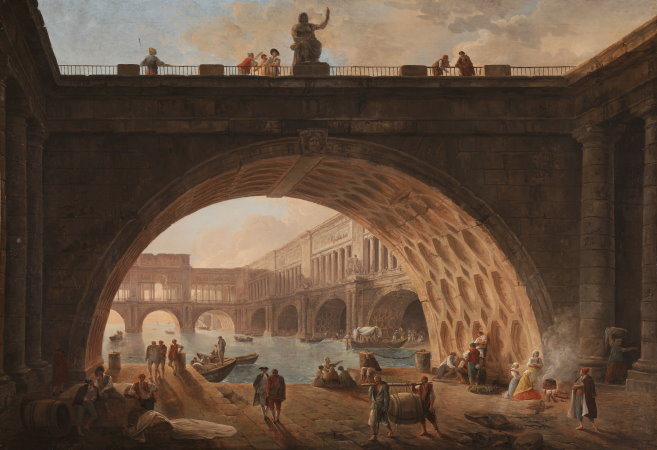 X
X
 X
X
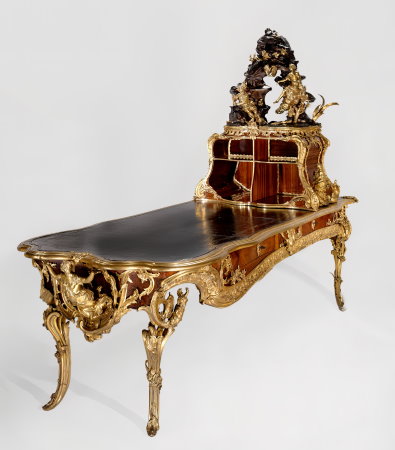 X
X
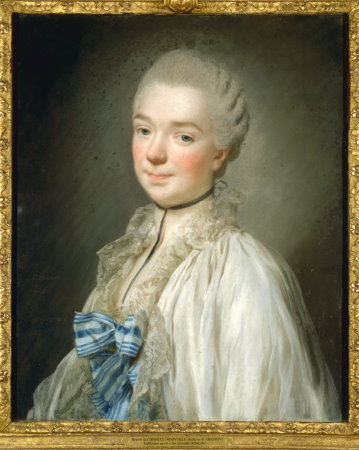 X
X
 X
X
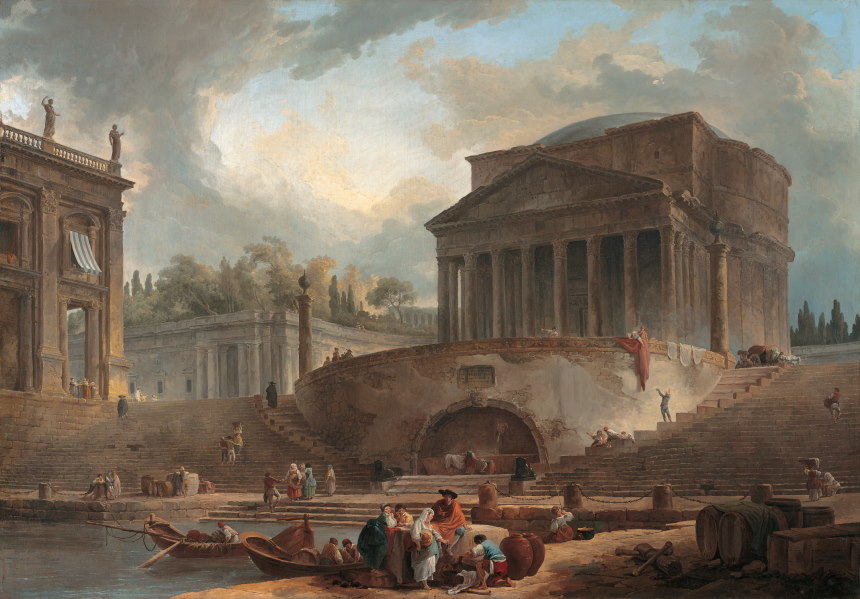 X
X

The Grande Galerie at the Louvre
The reverse side of the snuffbox shows the Duc de Choiseul standing among a group of military engineers in front of relief maps laid out in the Louvre’s Grande Galerie. Introduced during the reign of Louis XIV, these representations of the ports and fortifications of the Kingdom of France were no longer as helpful for defence purposes by Choiseul’s day, but could still be useful. The minister is depicted in the middle of a work session: one of the engineers is unrolling the map of a fortification in front of him. The visitors admiring these glorious images of past conquests suggest that the scene could be both a military and a social gathering.
This miniature on the snuffbox is the only record of the original decoration of the Grande Galerie, which featured a project undertaken by Nicolas Poussin in the early 1640s but never completed. The relief maps left the Galerie in 1777, foreshadowing the transformation of the Louvre palace into a museum.

